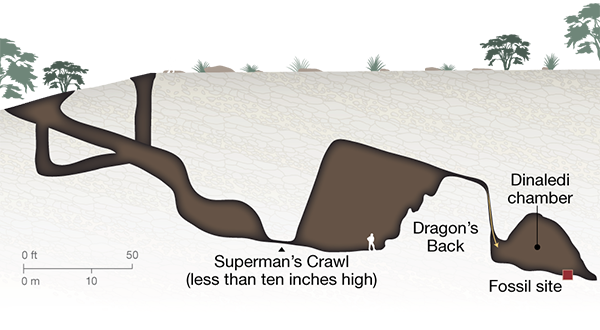Did Spiritual Beliefs about Life and Death Emerge before Modern Humans?
Burying the dead is a unique behavior to modern humans (Homo sapiens). Though a simple action, it is proof of complex social structures and abstract ideas. Homo naledi, an extinct “Hobbit” species discovered in 2013, could have also buried their dead. The fossilized remains of several H. naledi were found in a remote part of the Rising Star Cave in South Africa. However, the only access to the chamber is a rugged route, including two extremely narrow tunnels that require an uncomfortable crawling position to go through.

A side view of the Rising Star Cave shows the difficulty Homo naledi would have had accessing the chamber.
Several hypotheses have tried to explain how the fossils ended up there: cave-in, animal scavenging, flood waters. However, only deliberate disposal explains the effort required to move the remains through the cave, but this hypothesis still lacks concrete evidence to support it. New evidence of how the fossils accumulated would still not reveal what motivated them to bury their dead. Whether H. naledi is the first hominin species to practice burial behavior, or if that distinction goes to modern humans, requires further study.
Paleoanthropologists entering the cave demonstrate that bones were unlikely to have been accidentally left in the cave.
By Ruohan Li (’21)
